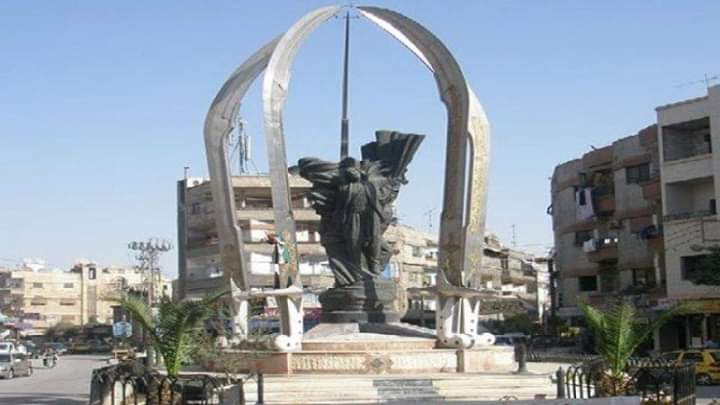The town of Jaramana, situated on the southeastern outskirts of Damascus, has become the latest focal point of protests against deteriorating service conditions and persistent power outages. This unexpected popular movement, which erupted last Monday and Tuesday, is poised to challenge the regime’s tight security grip on the Syrian capital and its environs.
Dozens of Jaramana residents, an area often considered a neighbourhood of Damascus, blocked the “President” and “Swords” squares at night using cars and motorcycles, demanding improved access to electricity and water. While local authorities are supposed to serve 500,000 people according to civil records, in reality, they cater to at least 3 million.
The Syrian regime is hesitant to suppress the Jaramana protests, primarily because the majority of its residents belong to the Druze sect. The regime has historically made significant efforts to keep the Druze community on the sidelines of the country’s conflicts. However, worsening living conditions have pushed the Druze community to protest, first seen in the Suweida Governorate in southern Syria, where initial communication movements evolved into politically charged demonstrations.
Life in Jaramana: “Unbearable”
“Life is no longer bearable in Jaramana and all areas under regime control,” stated Medhat Taroudi in an interview with Al-Araby Al-Jadeed. He elaborated, “There is no electricity, no water, no job opportunities, and no services of any kind. We live in misery.” Taroudi emphasized the lack of visible signs of improvement, accusing officials of lying and making false promises. He also noted that Jaramana, apart from its Druze population, hosts a large number of displaced people from various Syrian governorates, contributing to its dense population. He predicts the protests will continue, potentially diminishing temporarily but resurging as long as conditions remain unchanged.
Jaramana: A Historical Regime Support Base
The regime has traditionally viewed Jaramana as a supportive area, despite the surrounding regions being hotbeds of revolution, such as Beit Sahm and Aqraba to the south, Shebaa, Al-Maliha, Jisreen, Kafr Batna, and Ain Tarma to the east, and Jobar to the north. Nasser Al-Shami, a Jaramana resident, noted that many Damascus merchants found Jaramana ideal for production due to its proximity to the capital and availability of labor and public services. This economic activity bolstered the town’s rejection of movements against the regime. However, prolonged poor services, particularly concerning electricity and water, coupled with the ongoing economic crisis, have incited the town’s Druze residents to protest.
The Regime’s Dilemma
Citizen Hala Sultan remarked that Jaramana has become mired in misery, suggesting that only street protests might compel the regime to improve conditions. She highlighted the discrepancy between the official population figure of 500,000 and the estimated 3 million actual service users, including many displaced people. Sultan pointed out that many young people have emigrated or are planning to do so due to poor living conditions and scarce job opportunities. She warned that while current demands are service-oriented, a lack of official response could escalate these demands, mirroring the situation in Suweida.
Regime’s Limited Options
The regime’s reluctance to use force against protesters in Jaramana or Suweida stems from the demographic specificity of these areas. The regime aims to retain the minority card, which it has leveraged since 2011 to justify its actions to the international community. This demographic factor prevents the regime from labeling the residents of Jaramana and Suweida with standard accusations, limiting its security and military intervention options.
This article was translated and edited by The Syrian Observer. The Syrian Observer has not verified the content of this story. Responsibility for the information and views set out in this article lies entirely with the author.


